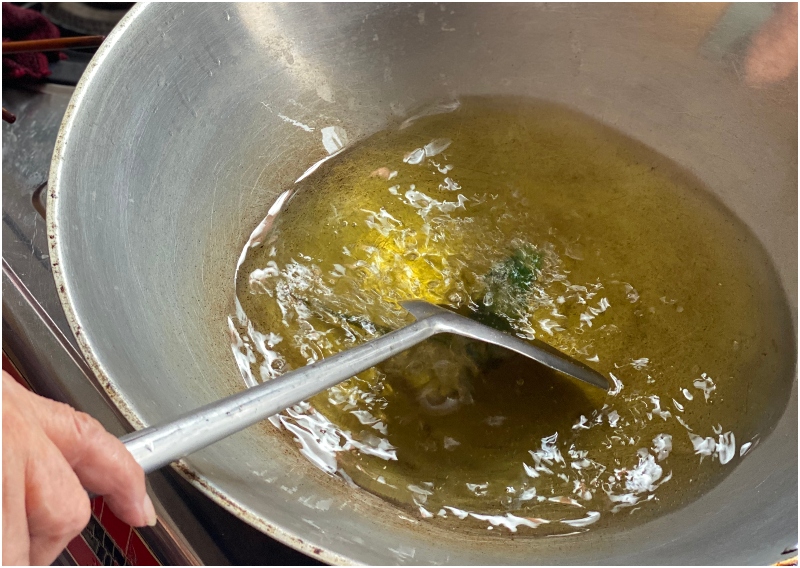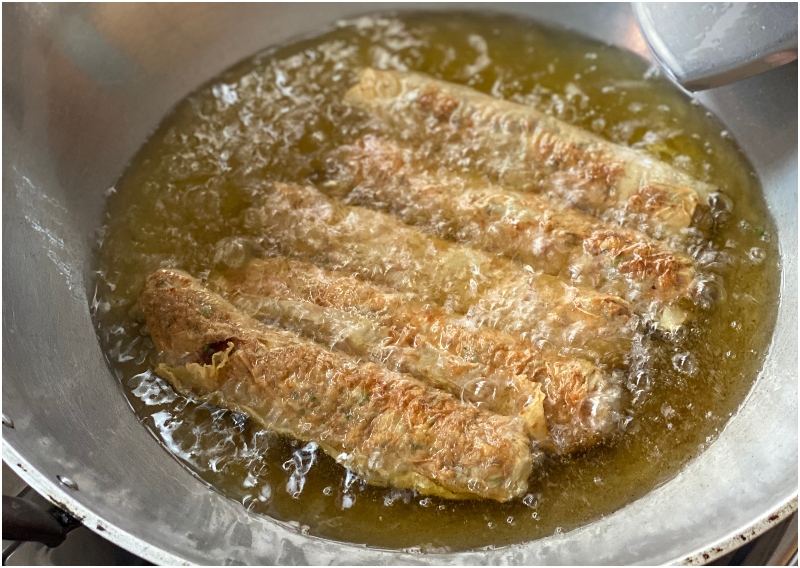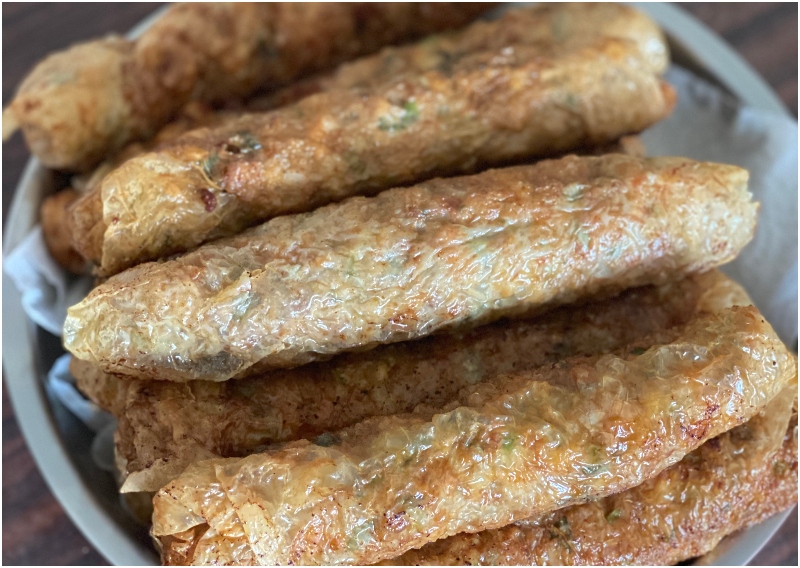I tried learning my grandma's well-loved ngoh hiang recipe — and it was easier than I thought


 PUBLISHED ONMay 10, 2021 1:15 AMBYLynette Phua
PUBLISHED ONMay 10, 2021 1:15 AMBYLynette PhuaMy family has always bonded over food.
Whether it was my grandma's ngoh hiang (deep fried meat rolls), my mum's chicken stew or my uncle's babi pongteh (braised pork in fermented soy bean sauce), we devour homemade delicacies with much fervour.
Since I was little, my extended family has always visited my grandma for dinners during the weekends.
But my grandma, being 88 this year, is no longer in tip-top condition to cook up a storm weekly.
During the circuit breaker period, she spent even less time cooking since we couldn't visit her for meals.
In order to learn her well-loved ngoh hiang and to spend more time with my grandma, I decided to learn the ways from her.

After a short phone call with her, I went to the market bright and early to get the specific ingredients from the specific stores she mentioned.
"You have to get the tiger soy sauce with the green cap. For the Chinese celery, just get $0.50 worth; you don't need more than that. Also, get the dried beancurd skin from the corner store of the Sims Vista Market," she said.
Here are the ingredients you'll need:

Just as I was doing a flat lay of all the ingredients, my grandma, who is used to prepping food fast and fuss-free, was already hurrying me to get to work: "Why haven't you prepared the ingredients!"

Squatting on the floor with a chopper was a new experience to me, but I did not dare show signs of weaknesses for my grandma has been doing this since her teens. I have a new-found admiration for her.
While I prepped the prawns, she did all the preparation work for rest of the ingredients — diced the shallots, water chestnuts, Chinese celery and wiped the salted beancurd skin with a dry towel.

Next, all the ingredients were strewn into a basin and mixed till they became a sticky, gooey, beautiful mess.

Now we roll.
Or rather, she did, because she got slightly annoyed at how slow I was.


Once you have all the ngoh hiang ready, load up the oil in a frying pan and add some pandan leaves to infuse it.

And in they go — we're a step closer to having some crispy meat rolls.

And since my grandma was so vague about how long to cook it, I decided to put my timer to good use.

If you're too lazy to use a timer, "golden brown" is the name of the game.

After a morning (and a whole afternoon) of prepping and frying, the end results were 20 golden brown ngoh hiang that's worth the time and the effort.
The bonding aspect though, priceless.
lynette@asiaone.com